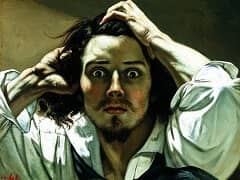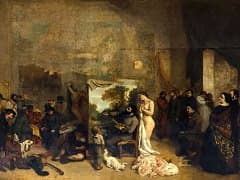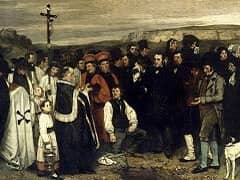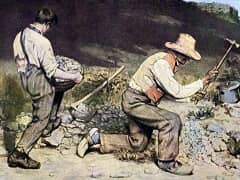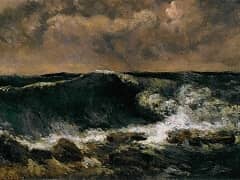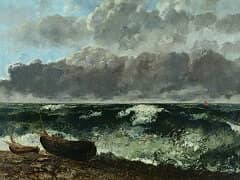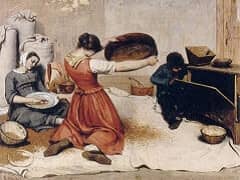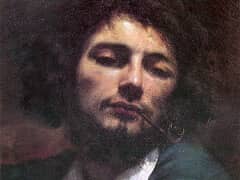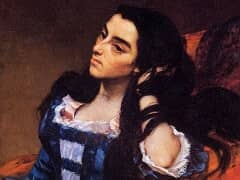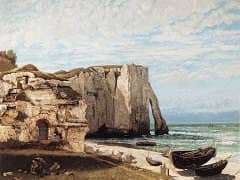The Trout, 1873 by Gustave Courbet
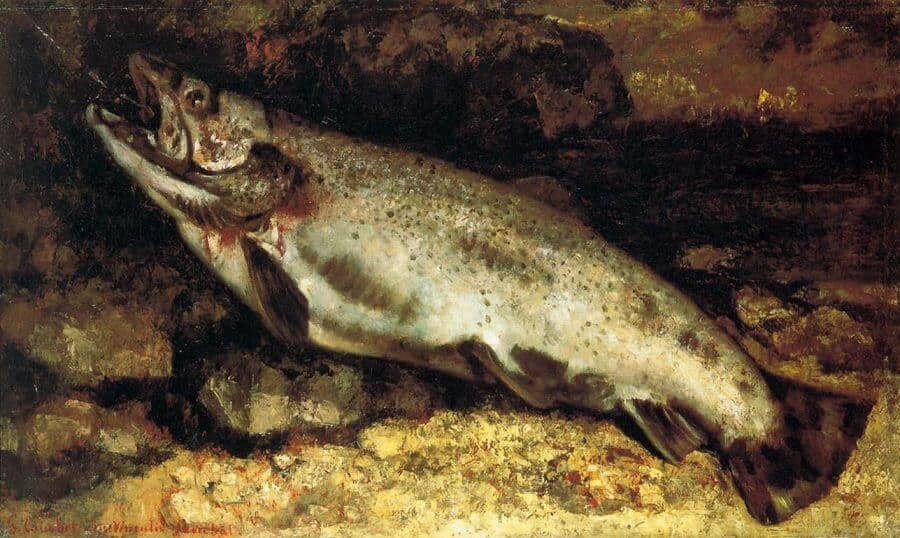
After serving six months in prison for his participation in the 1871 Commune, Courbet spent some time in his native Franche-Comte before finally going into exile in Switzerland. During this period he produced several still lifes of fish, inspired by the huge trout caught by the fisherman on the river Loue, which runs through Ornans. The painting in the Musee d'Orsay is a variant of another Trout, of the same size, in the Kunsthaus in Zurich.
Courbet follows in the tradition of still lifes of fish painted by the 17th century Dutch masters. But his Trout goes further than these with its dramatic nature. One can clearly see in this image of the fish that has been caught and vanquished, but is still alive, a representation of the painter himself, still prey to the judiciary. Crushed by the hardships he had experienced, Courbet returned, in his last works, to the romantic style of the paintings of his youth.
Although there is undeniably a Dutch influence in the painting, Courbet's powerful individuality shines through in the intense touch, the rough paint and the violent contrasts. The lyricism reveals the despair of the man.

